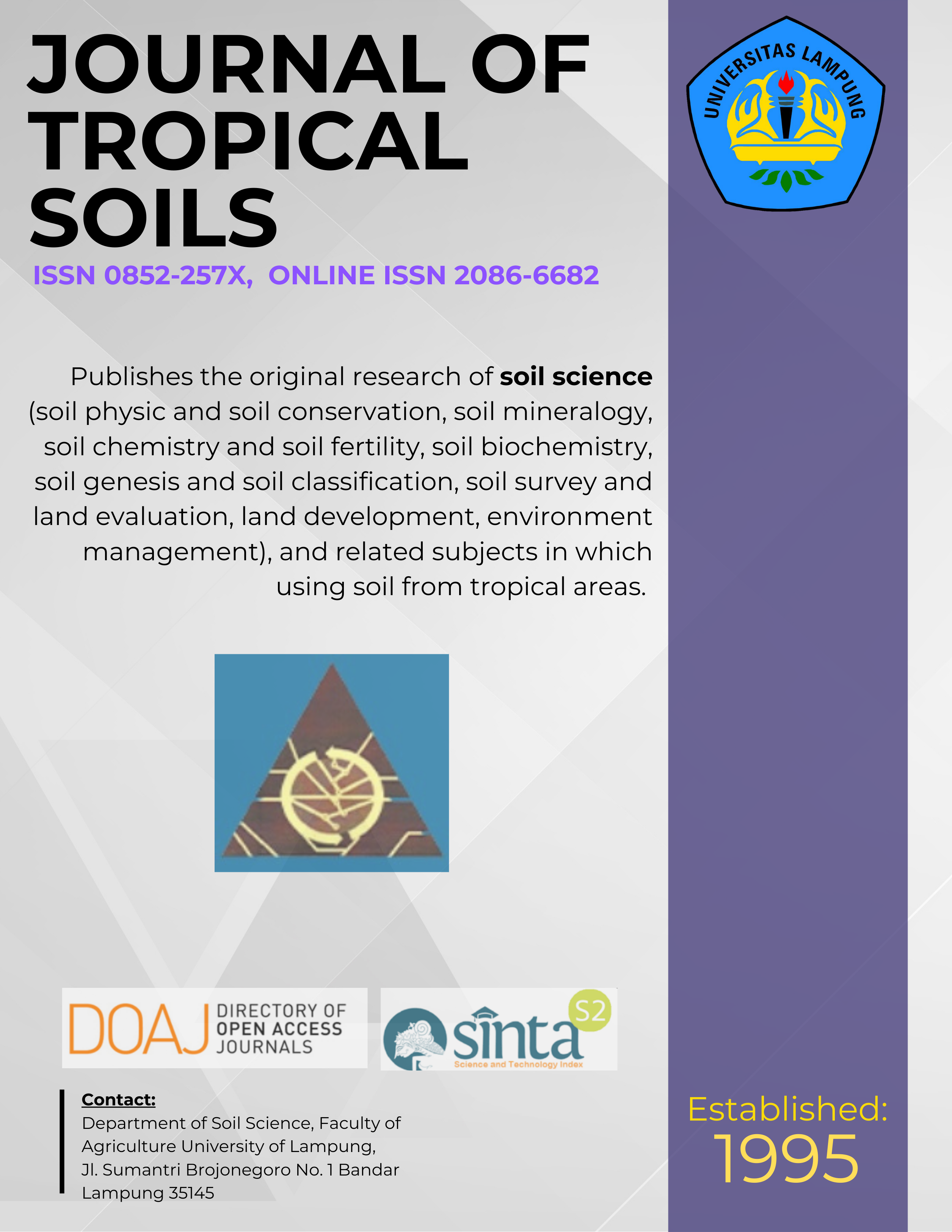Improvement of Latex Quality Using Locally-Produced Organic Fertilizer from Rubber Processing Sewage Sludges
Main Article Content
Abstract
Most of rubber plants in Indonesia are cultivated in highly-weathered soils; therefore, their annual productions are relatively low with the low quality of latex. The aim of this reseach was to increase the latex quality from a rubber plantation grown on low fertility soils by applying a locally-produced organic fertilizer (LOF) to the soils. This research consisted of two steps, i.e. LOF production and a field fertilization experiment. The LOF was made mainly from waste of a latex processing industry. The field fertilization experiment was conducted to assess the effects of LOF additions to the soils on the latex quality. The field experiment was performed using a randomized complete block design with 6 LOF levels, 4 levels of land slopes, and 5 rubber trees in each block, resulting in 120 rubber trees. The LOF levels were 0, 10, 20, 30, 40, and 50 kg tree-1. The LOF contained 17.35% organic-C, 1.14% total-N, 0.53 ppm available-P, and 1.21 cmol (+)kg-1 exchangeable-K, with slightly alkaline pH (pH 8.0). The soil has low fertility status as indicated by the low amounts of total-N and exchangeable base cations (K, Na, and Mg), and very acid pH (pH 4.5). Indicators of latex quality comprising of blockage index, ash-, impurity- and dry rubber-content, and N, P, K contents in the rubber leaves were measured. Although there were no significant differences in most observed latex properties due to LOF addition, their values tended to be higher when the rubber trees were fertilized with LOF. Apparently N and K contents in the rubber leaves are better correlated to the latex properties compared to the P content.
Â
Downloads
Article Details
Section
License for Authors
Authors who publish with this journal agree to the following terms:
- Authors retain copyright and grant the journal right of first publication with the work simultaneously licensed under a Creative Commons Attribution License that allows others to share the work with an acknowledgement of the work's authorship and initial publication in this journal.
- Authors are able to enter into separate, additional contractual arrangements for the non-exclusive distribution of the journal's published version of the work (e.g., post it to an institutional repository or publish it in a book), with an acknowledgement of its initial publication in this journal.
- Authors are permitted and encouraged to post their work online (e.g., in institutional repositories or on their website) prior to and during the submission process, as it can lead to productive exchanges, as well as earlier and greater citation of published work (See The Effect of Open Access).
License for Regular Users
Other regular users who want to cite, distribute, remix, tweak, and build upon author’s works, even for commercial purposes, should acknowledge the work’s authorship and initial publication in this journal, licensed under a Creative Commons Attribution License.

